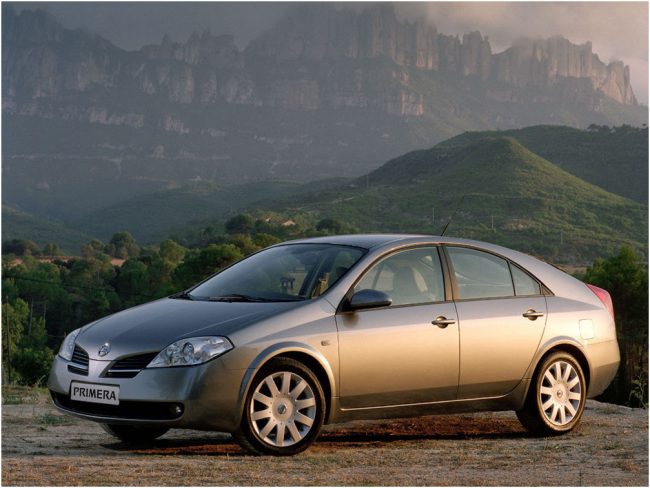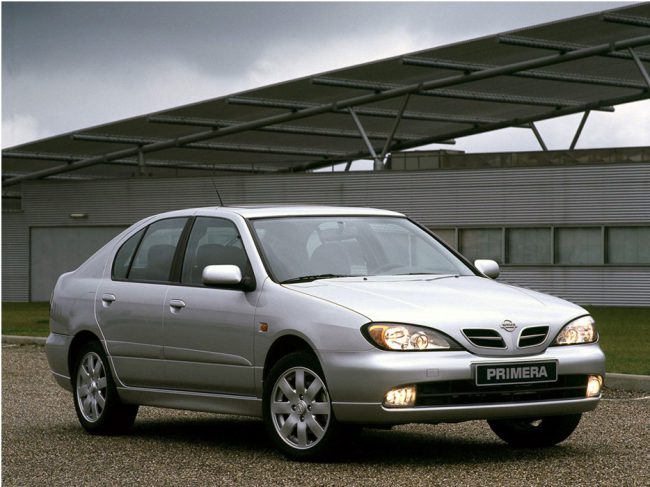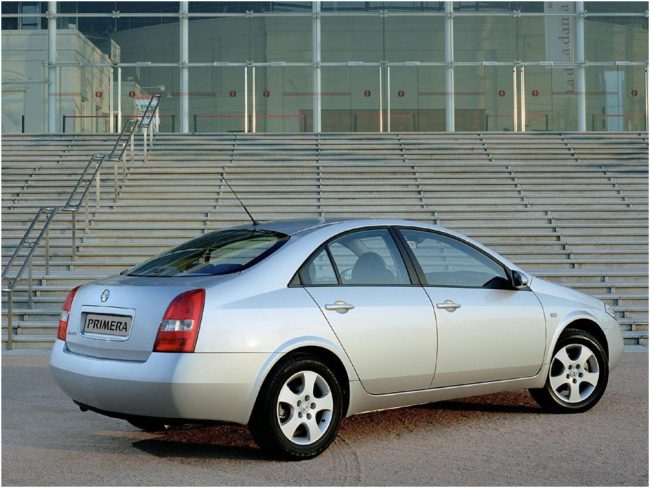
Nissan Primera engines
Content
Motorists saw the first Nissan Primera car model in 1990, which replaced the previously popular Bluebird. The same year became a landmark for the car, as it became the winner of the Car of the Year automobile competition, which is held annually in Europe. This achievement is still the highest for this brand. Nissan Premiere is available with two types of bodies, it is a hatchback or a sedan.
Somewhat later, namely in the fall of 1990, a model of this brand with all-wheel drive saw the light. The example in the first generation had a P10 body, and the W10 body was intended for the station wagon. There was a big difference between the cars, despite the use of the same powertrains, the similarity of the interiors, and other factors. The station wagon was produced until 1998 in Japan, and the P10 was produced on the islands of foggy Albion.
The main difference between these models is the suspension design. For a sedan, a three-link front suspension is installed, while for station wagons, MacPherson struts and a dependent beam are used. The rear beam is almost “eternal”, but the handling of the car is noticeably worse. The rigidity of the multi-link suspension provides high comfort when driving a sedan or hatchback. It is these qualities that are highly valued by the owners of this brand, as evidenced by the numerous reviews of drivers.
In the photo of a third-generation Nissan Primera car:
What engines were installed on cars of different years of manufacture
The first generation Nissan Primera was produced until 1997. In the markets of many European countries, cars were supplied with engines that ran on both gasoline and diesel fuel. The first had a working volume of 1,6 or 2,0 liters, and a diesel engine of 2000 cm3.
Nissan Primera engines of the first generation:
| By car | engine's type | Мотор | Working volume in l | Power indicators, hp | Notes |
|---|---|---|---|---|---|
| Example 1,6 | R4, gasoline | GA16DS | 1.6 | 90 | 1990-1993 Europe |
| Example 1,6 | R4, gasoline | Ga16DE | 1.6 | 90 | 1993-1997 Europe |
| Example 1,8 | R4, gasoline | SR18Tue | 1.8 | 110 | 1990-1992, Japan |
| Example 1,8 | R4, gasoline | SR18DE | 1.8 | 125 | 1992-1995, Japan |
| Example 2,0 | R4, gasoline | SR20Tue | 2 | 115 | 1990-1993, Europe |
| Example 2,0 | R4, gasoline | SR20DE | 2 | 115 | 1993-1997, Europe |
| Example 2,0 | R4, gasoline | SR20DE | 2 | 150 | 1990-1996, Europe, Japan |
| Example 2,0 TD | R4 diesel | CD20 | 1.9 | 75 | 1990-1997, Europe |
The gearbox could be a manual transmission or "automatic". The first has five steps, and only four are provided for automatic machines.
The second generation (P11) was produced from 1995 to 2002, and in Europe the car appeared in 1996. Production, as before, was organized in countries such as Japan and the UK. The buyer could purchase a vehicle with body type sedan, hatchback or wagon, and in Japan it was possible to buy a car with all-wheel drive. The kit included five-speed manual or four-speed automatic transmissions. In the car market in Japan, you could buy a car with all-wheel drive.
Not without restyling of this brand, which was completed in 1996. Modernization affected not only the motors of the car, but also its appearance. Engines with a working volume of two liters began to be equipped with a variator instead of a traditional gearbox. The sale of cars produced by the second generation in Japan continued until the end of 2000, and in European countries a little longer, until 2002.
Powertrains for Nissan Primera, released by the second generation
| By car | engine's type | Мотор | Working volume in l | Power indicators, hp | Notes |
|---|---|---|---|---|---|
| Example 1,6 | R4, gasoline | GA16DE | 1.6 | 90/99 | 1996-2000, Europe |
| Example 1,6 | R4, gasoline | QG16DE | 1.6 | 106 | 2000-2002, Europe |
| Example 1,8 | R4, gasoline | SR18DE | 1.8 | 125 | 1995-1998, Japan |
| Example 1,8 | R4, gasoline | QG18DE | 1.8 | 113 | 1999-2002, Europe |
| Example 1,8 | R4, gasoline | QG18DE | 1.8 | 125 | 1998-2000, Japan |
| Example 1,8 | R4, gasoline | QG18DD | 1.8 | 130 | 1998-2000, Japan |
| Example 2,0 | R4, gasoline | SR20DE | 2 | 115/131/140 | 1996-2002, Europe |
| Example 2,0 | R4, gasoline | SR20DE | 2 | 150 | 1995-2000, Europe, Japan |
| Example 2,0 | R4, gasoline | SR20VE | 2 | 190 | 1997-2000, Japan |
| Example 2,0 TD | R4, diesel, turbo | CD20T | 1.9 | 90 | 1996-2002, Europe |

Nissan Primera produced since 2001
For the third generation Nissan in Japan, 2001 became significant, and the next year, 2002, motorists in European countries could see it. The appearance of the car and the interior decoration of the body have undergone major changes. The power units were used to run on gasoline and turbodiesel, and the transmission used a mechanical, automatic transmission, as well as CVT systems. The regions of the Russian Federation were officially supplied with cars with engines running on gasoline, as well as a certain number of diesel 2,2 liter engines.
Engines of the third generation Nissan Premiere:
| The model of car | Engine | Motor modification | Working volume in l | Power indicators, hp | Notes |
|---|---|---|---|---|---|
| Premiere 1,6 | QG16DE | R4, gasoline | 1.6 | 109 | 2002-2007, Europe |
| Premiere 1,8 | QG18DE | R4, gasoline | 1.8 | 116 | 2002-2007, Europe |
| Premiere 1,8 | QG18DE | R4, gasoline | 1.8 | 125 | 2002-2005, Japan |
| Premiere 2,0 | QR20DE | R4, gasoline | 2 | 140 | 2002-2007, Europe |
| Premiere 2,0 | QR20DE | R4, gasoline | 2 | 150 | 2001-2005, Japan |
| Premiere 2,0 | SR20VE | R4, gasoline | 2 | 204 | 2001-2003, Japan |
| Premiere 2,5 | OR25DE | R4, gasoline | 2.5 | 170 | 2001-2005, Japan |
| Premiere 1,9dci | Renault F9Q | R4, diesel, turbo | 1.9 | 116/120 | 2002-2007, Europe |
| premiere 2,2 dci | YD22DDT | R4, diesel, turbo | 2.2 | 126/139 | 2002-2007, Europe |
What motors are most widely used
It should be noted that manufacturers complete machines with a wide variety of power units. It can be both gasoline and diesel engines. Among gasoline engines, it should be noted a 1,6-liter engine with distributed injection or a two-liter mono-injector. Many Nissan Primera P11 cars move on roads with an SR20DE engine.
If you read the reviews of the owners, you can see that the entire line of engines has a fairly large resource. If timely maintenance is carried out using high-quality consumables, the mileage without engine repair can exceed 400 thousand kilometers.
The second generation Nissan Primera P11 consumes 8,6 to 12,1 liters of fuel on city streets with a mileage of 100 km. On country roads, the consumption is less, it will be 5,6-6,8 liters per hundred kilometers. Fuel consumption largely depends on the driving style of the car, the conditions of its operation, the technical condition of the car. Oil consumption starts to increase as the mileage increases.
Which engine is better
This choice is faced by many potential buyers of this car model. Before you decide on a particular motor, you should consider some factors:
- Vehicle operating conditions.
- Driving style.
- Estimated yearly vehicle mileage.
- Fuel used.
- Type of transmission installed on the machine.
- Other factors.
For those owners who do not plan to continue to use the car with a full load and move at high speeds, an engine with a displacement of 1600 cmXNUMX is suitable3. Fuel consumption will also not be too high, 109 horses will provide such owners with the necessary comfort.
The best option would be to install a 1.8-liter engine with a power of 116 hp. An increase in the working volume of the engine made it possible to improve the power and dynamic performance of the car. The best performance is achieved when a manual gearbox is paired with this motor. For the "machine" will require a more powerful engine. Two liters, and this is about 140 horses, is the best fit for such a transmission. In the ideal case, it will be the use of a variator paired with this motor.
A hydromechanical machine can serve more than 200 thousand kilometers without any problems. The variator of these cars is very sensitive to bad roads and aggressive driving style. Diesel power units are rare in the automotive market of the Russian Federation and the CIS. They showed themselves on the good side both in terms of reliability and efficiency. Without any problems they work on domestic diesel fuel. The belt in the timing mechanism drive works for its 100 thousand km of run, and the roller in the tension mechanism is twice as large.
In conclusion, it can be noted that by purchasing a Nissan Primera, the owner receives a profitable purchase of goods in terms of price-quality ratio. The cost of maintenance and care of this car will not be very burdensome for a family with a modest budget.

